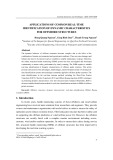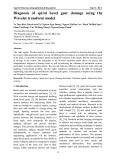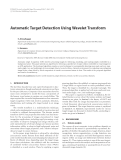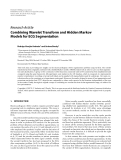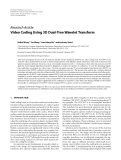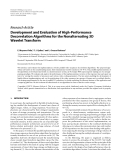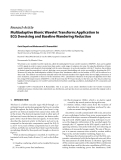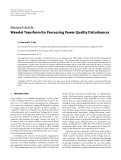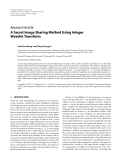
Journal of Science and Technique - ISSN 1859-0209
7
APPLICATIONS OF COMMON REAL-TIME
IDENTIFICATION OF DYNAMIC CHARACTERISTICS
FOR OFFSHORE STRUCTURES
Hong Quang Nguyen1, Cong Binh Dao1,*, Thanh Trung Nguyen2
1Institute of Techniques for Special Engineering, Le Quy Don Techical University
2Faculty of Civil Engineering, University of Transport and Communications
Abstract
The dynamic behavior of offshore structures becomes complex due to the effect of the
combination of marine environmental and operational conditions. There are some damages and
failures that need to be detected early to establish a suitable maintenance strategy. Therefore,
the online structural health monitoring (SHM) system has been investigated and developed
continuously to ensure safety performance by timely warning. The SHM requires a suitable
real-time identification of dynamic characteristics of offshore jacket structure. This article
presents a discussion of the advantages, disadvantages, and development trends of existing real-
time identification systems and techniques commonly applied to offshore jacket structures. The
main identifications in the real-time domain methods including the Short-Time Fourier
Transform (STFT), Wavelet Transform (WT) and Hilbert Huang transform (HHT) techniques
in predicting dynamic characteristics were also discussed and evaluated. Meanwhile, HHT is
the most suitable identification method for real-time identification methods in SHM of offshore
jacket structures.
Keywords: Offshore structure; dynamic characteristic; real-time identification; Hilbert Huang
transform (HHT).
1. Introduction
In recent years, health monitoring systems of fixed offshores and wind turbine
engineering have received more attention from researchers and engineers. They provide
owners and maintenance organization with useful advice in order to ensure the safety of
operations and to reduce economic losses. The fixed jacket structure has been widely used
in supporting the offshore platforms or wind turbine power [1]. However, the offshore
structures are usually faced with a complex marine environment including waves,
currents, wind and/or machine operation. In order to ensure their safety during service
life, structural health monitoring (SHM) of offshore structures has been improved by
developing the real-time warning system.
* Corresponding author, email: daocongbinh@lqdtu.edu.vn
DOI: 10.56651/lqdtu.jst.v7.n02.920.sce















